What are the Key Features of Four Row Tapered Roller Bearings?
Four row tapered roller bearings are sophisticated mechanical components designed to handle heavy radial and axial loads in various industrial applications. These bearings are characterized by their unique configuration of four rows of tapered rollers, which allows them to support loads from multiple directions simultaneously. Their robust design and load-bearing capabilities make them essential in industries such as mining, steel production, and heavy machinery manufacturing.
What are the advantages of four row tapered roller bearings over other bearing types?

Four row tapered roller bearings offer several significant advantages over other bearing types, making them the preferred choice for many high-load applications. One of the primary benefits is their exceptional load-carrying capacity. The four rows of tapered rollers provide a larger contact area between the rollers and raceways, allowing the bearing to distribute loads more evenly. This design enables these bearings to handle heavy radial and axial loads in both directions, making them ideal for applications where traditional bearings might fail.
Another advantage is their ability to maintain proper alignment under heavy loads. The tapered design of the rollers allows them to compensate for misalignment and deflection that may occur in the shaft or housing. This self-aligning property helps to reduce wear and extend the bearing's service life, even in challenging operating conditions.
Four row tapered roller bearings also excel in their ability to handle combined loads. In many industrial applications, machinery is subjected to a combination of radial and axial forces. The unique geometry of these bearings allows them to efficiently manage these complex load combinations, providing superior performance and reliability compared to single-row or double-row alternatives.
Furthermore, these bearings offer improved stiffness and rigidity to the entire system. The four-row configuration creates a wider effective bearing span, which enhances the overall stability of the assembly. This increased stiffness is particularly beneficial in applications where precision and minimal deflection are crucial, such as in machine tool spindles or rolling mill stands.
Lastly, four row tapered roller bearings often provide a more compact solution compared to using multiple single-row bearings. By integrating four rows of rollers into a single unit, these bearings can save space and simplify the overall design of machinery. This compactness can lead to more efficient use of space within equipment and potentially reduce the complexity of the surrounding support structure.
How do four row tapered roller bearings contribute to increased machinery efficiency?
Four row tapered roller bearings play a crucial role in enhancing machinery efficiency across various industrial sectors. Their unique design and capabilities contribute to improved performance, reduced downtime, and increased overall productivity of the equipment they support.
One of the primary ways these bearings boost efficiency is through their superior load-carrying capacity. By effectively distributing heavy loads across four rows of rollers, they minimize stress on individual components and reduce the risk of premature failure. This enhanced load distribution allows machinery to operate at higher capacities without compromising reliability, ultimately leading to increased output and productivity.
The high stiffness provided by four row tapered roller bearings also contributes significantly to machinery efficiency. In applications where precision is paramount, such as in machine tools or industrial gearboxes, the increased rigidity offered by these bearings helps maintain accurate positioning and alignment of components. This precision translates to higher quality output, reduced scrap rates, and improved overall efficiency of manufacturing processes.
Furthermore, the ability of these bearings to handle combined loads efficiently means that equipment can perform multiple functions without the need for separate bearings for different load directions. This versatility can lead to simpler machine designs, reduced part counts, and lower maintenance requirements, all of which contribute to improved operational efficiency.
The self-aligning properties of four row tapered roller bearings also play a role in enhancing efficiency. By compensating for minor misalignments that may occur due to shaft deflection or mounting inaccuracies, these bearings reduce friction and wear. Lower friction levels result in decreased energy consumption, while reduced wear extends the service life of the bearings and associated components. This combination of energy efficiency and longevity contributes to lower operating costs and reduced downtime for maintenance or replacements.
Another aspect of efficiency improvement lies in the thermal management capabilities of these bearings. The design of four row tapered roller bearings often incorporates features that facilitate better heat dissipation. Efficient heat management is crucial in high-speed or high-load applications, as it helps maintain optimal operating temperatures. By preventing overheating, these bearings ensure consistent performance and reduce the risk of lubrication breakdown or thermal damage, which could otherwise lead to efficiency losses or equipment failure.
The compact nature of four row tapered roller bearings also contributes to machinery efficiency by allowing for more streamlined equipment designs. This compactness can lead to reduced overall machine size, lower weight, and potentially decreased material costs in equipment manufacturing. Smaller, lighter machinery often requires less energy to operate, further enhancing efficiency.
Lastly, the robust design of these bearings often results in extended service intervals. Longer periods between maintenance or replacement activities mean less downtime for equipment, higher operational availability, and reduced labor costs associated with bearing servicing. This reliability is particularly valuable in continuous operation industries where every minute of uptime translates to increased productivity and profitability.
What are the key considerations when selecting and maintaining four row tapered roller bearings?
Selecting and maintaining four row tapered roller bearings requires careful consideration of various factors to ensure optimal performance and longevity. These bearings are significant investments in machinery reliability, and proper selection and maintenance are crucial for maximizing their benefits.
When selecting four row tapered roller bearings, one of the primary considerations is the load characteristics of the application. It's essential to accurately determine the magnitude and direction of both radial and axial loads that the bearing will encounter. This information helps in choosing a bearing with the appropriate load rating and internal geometry. Underestimating the loads can lead to premature failure, while overestimating may result in unnecessary costs for oversized bearings.
Operating speed is another critical factor in the selection process. Four row tapered roller bearings are capable of handling high speeds, but the specific speed limits can vary depending on the bearing size, design, and lubrication method. It's important to consider not only the nominal operating speed but also any potential speed variations or peak speeds that may occur during operation. Selecting a bearing that can handle the full range of operational speeds ensures reliable performance and prevents issues like excessive heat generation or premature wear.
The operating environment also plays a significant role in bearing selection. Factors such as temperature, contamination levels, and exposure to moisture or chemicals can all impact bearing performance and lifespan. For harsh environments, special sealing arrangements or material choices may be necessary. High-temperature applications might require bearings with special heat treatments or alternative materials that maintain their properties at elevated temperatures.
Lubrication is a critical aspect of both selection and maintenance. The choice between grease and oil lubrication depends on factors such as speed, load, and accessibility for maintenance. Oil lubrication is often preferred for high-speed or high-temperature applications, while grease can be suitable for lower-speed operations or where simplified maintenance is desired. Regardless of the lubrication type, it's crucial to establish a proper lubrication schedule and use lubricants that are compatible with the bearing materials and operating conditions.
Proper installation is paramount for the performance and longevity of four row tapered roller bearings. This process often requires specialized tools and techniques to ensure correct alignment and preload. Incorrect installation can lead to premature failure, increased friction, and reduced efficiency. It's often advisable to work with experienced technicians or consult with the bearing manufacturer for installation guidance.
Maintenance of four row tapered roller bearings involves regular monitoring and preventive measures. Implementing a condition monitoring program can help detect potential issues before they lead to catastrophic failure. This may include vibration analysis, temperature monitoring, and regular oil analysis (for oil-lubricated bearings). These techniques can provide early warning signs of bearing wear, lubrication issues, or misalignment.
Cleanliness during maintenance procedures is crucial. Even small particles of contamination can cause significant damage to the precision surfaces of the bearing. Proper cleaning of the surrounding area before opening a bearing housing, and using clean tools and work surfaces, can prevent the introduction of harmful contaminants.
Periodic re-lubrication is a key maintenance task for grease-lubricated bearings. The frequency and quantity of re-lubrication depend on the operating conditions and bearing size. Over-greasing can be as detrimental as under-greasing, so it's important to follow manufacturer guidelines or establish a lubrication schedule based on operating experience and condition monitoring data.
For oil-lubricated systems, regular oil changes and filtration are essential. The oil not only provides lubrication but also helps in cooling and removing wear particles. Monitoring oil quality through regular analysis can provide insights into the bearing's condition and help optimize the oil change intervals.
Attention to the surrounding components is also important in maintaining four row tapered roller bearings. The condition of seals, housings, and shafts can all impact bearing performance. Regular inspection of these components and prompt replacement of worn parts can prevent contamination and ensure proper support for the bearing.
Finally, proper handling and storage of spare bearings are crucial. Four row tapered roller bearings are precision components that can be damaged by improper handling or storage conditions. They should be stored in their original packaging, in a clean, dry environment, and handled with care to prevent damage to the precision-machined surfaces.
By carefully considering these factors in selection and maintaining a diligent maintenance regime, users can ensure that their four row tapered roller bearings provide reliable, efficient service throughout their intended lifespan, maximizing the return on investment and contributing to overall equipment effectiveness.
Luoyang Huigong Bearing Technology Co., Ltd. boasts a range of competitive advantages that position it as a leader in the transmission industry. Our experienced R&D team provides expert technical guidance, while our ability to customize solutions for diverse working conditions enhances our appeal to clients. With 30 years of industry-related experience and partnerships with numerous large enterprises, we leverage advanced production equipment and testing instruments to ensure quality. Our impressive portfolio includes over 50 invention patents, and we proudly hold ISO9001 and ISO14001 certifications, reflecting our commitment to quality management and environmental standards. Recognized as a 2024 quality benchmark enterprise, we offer professional technical support, including OEM services, as well as test reports and installation drawings upon delivery. Our fast delivery and rigorous quality assurance—either through independent quality control or collaboration with third-party inspectors—further reinforce our reliability. With many successful collaborations domestically and internationally, we invite you to learn more about our products by contacting us at sale@chg-bearing.com or calling our hotline at +86-0379-65793878.
References
1. SKF Group. (2023). Tapered roller bearings. SKF.com.
2. Timken Company. (2024). Tapered Roller Bearings. Timken.com.
3. NSK Ltd. (2022). Roller Bearings. NSK.com.
4. Schaeffler Technologies AG & Co. KG. (2023). Tapered roller bearings. Schaeffler.com.
5. NTN Corporation. (2024). Tapered Roller Bearings. NTN Global.
6. American Roller Bearing Company. (2023). Four-Row Tapered Roller Bearings. AMROLL.com.
7. Machinery Lubrication. (2022). Tapered Roller Bearing Basics. MachineryLubrication.com.
8. Engineering360. (2023). Roller Bearings Information. GlobalSpec.com.
9. Motion Industries. (2024). Bearing Maintenance Best Practices. MotionIndustries.com.
10. Reliable Plant. (2023). Extending bearing life in harsh operating conditions. ReliablePlant.com.
YOU MAY LIKE
-
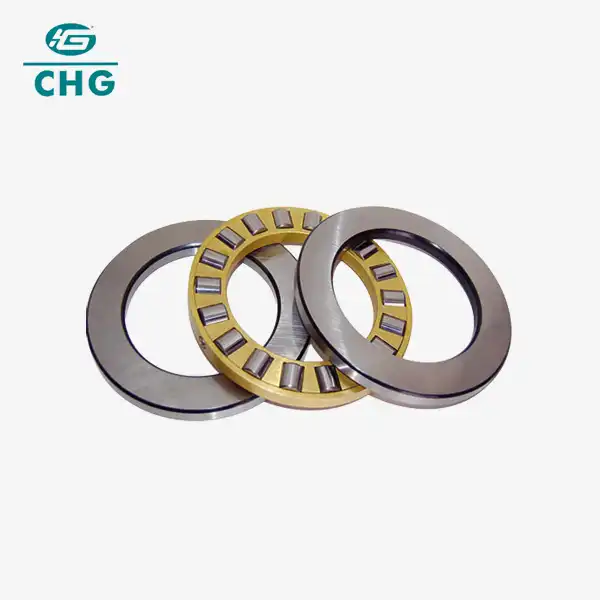 VIEW MORECylindrical Roller Thrust Bearings
VIEW MORECylindrical Roller Thrust Bearings -
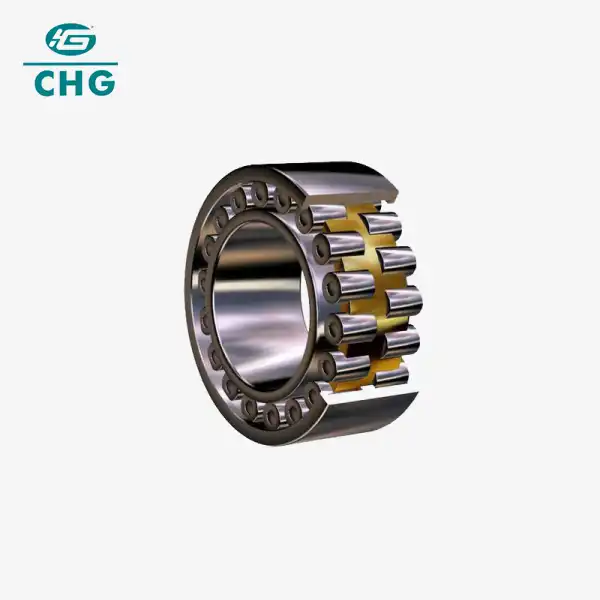 VIEW MOREDouble Row Spherical Roller Bearing
VIEW MOREDouble Row Spherical Roller Bearing -
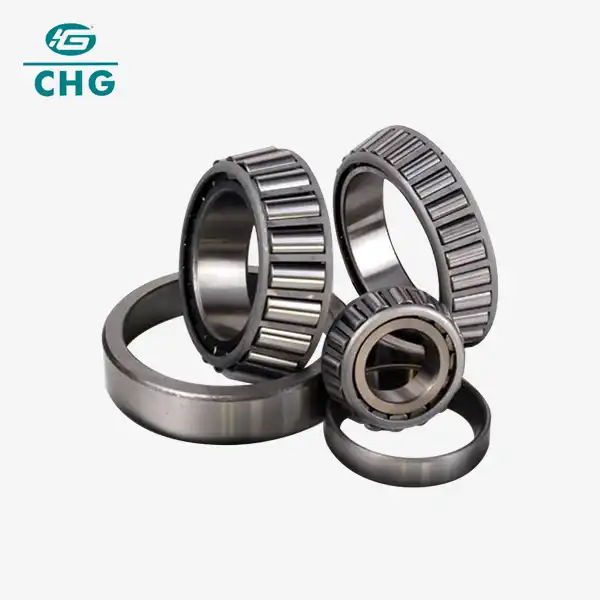 VIEW MORELarge Tapered Roller Bearings
VIEW MORELarge Tapered Roller Bearings -
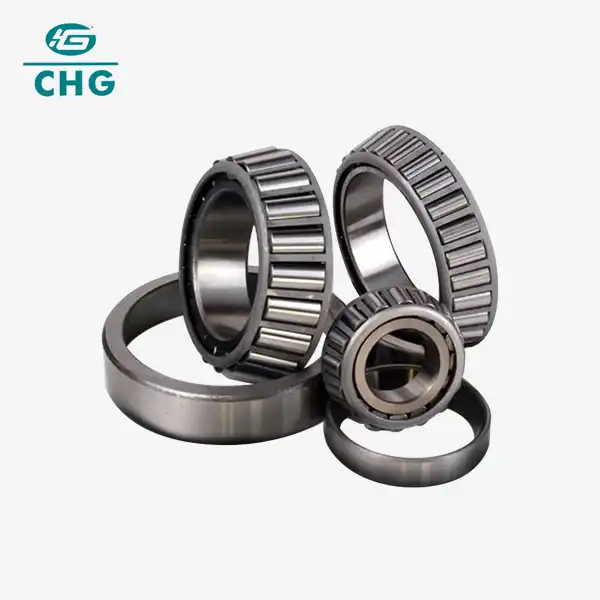 VIEW MORETapered Rolling Bearing
VIEW MORETapered Rolling Bearing -
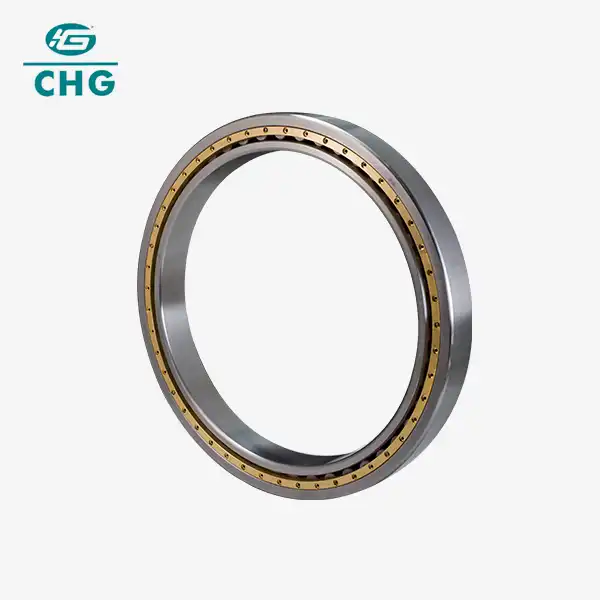 VIEW MORELarge Cylindrical Roller Bearing
VIEW MORELarge Cylindrical Roller Bearing -
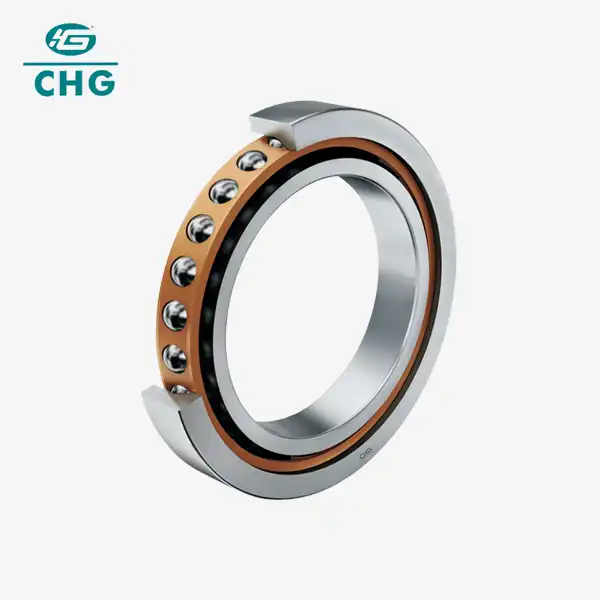 VIEW MORE4 Point Angular Contact Ball Bearing
VIEW MORE4 Point Angular Contact Ball Bearing -
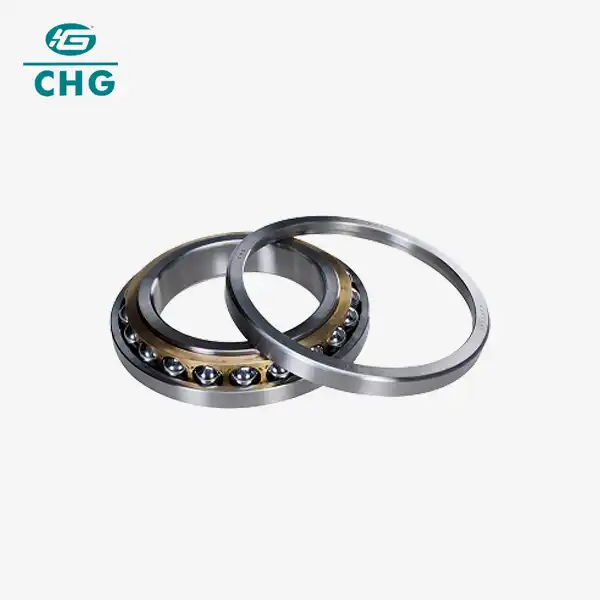 VIEW MOREThin Section Four Point Contact Ball Bearings
VIEW MOREThin Section Four Point Contact Ball Bearings -
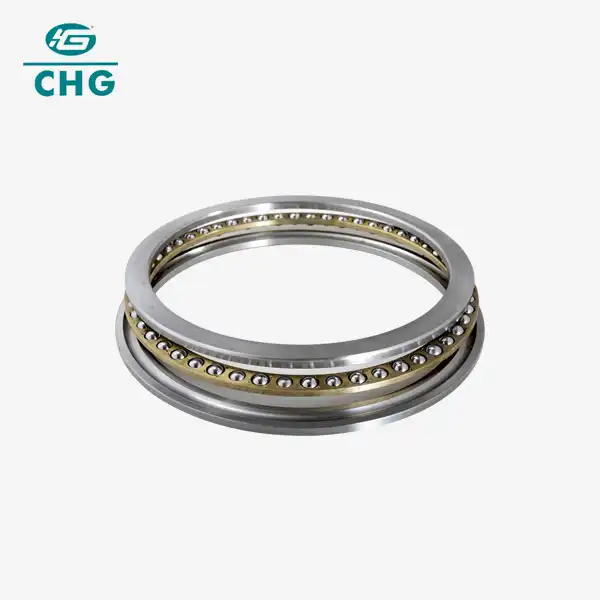 VIEW MORESingle Row Thrust Ball Bearing
VIEW MORESingle Row Thrust Ball Bearing

